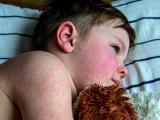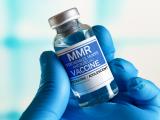Jun 20, 2011
FDA outlines plan to improve safety of imported food, drugs
Citing a quadrupling since 2000 of imports that it regulates, the US Food and Drug Administration (FDA) today outlined a new strategy to ensure the safety of imported food, drugs, and other products. Called the "Pathway to Global Product Safety and Quality," the report focuses on four key steps the agency plans to take: (1) partner with its counterparts worldwide to create coalitions of regulators, (2) develop international data information systems, (3) bolster information gathering and analysis focused on risk, and (4) leverage the efforts of public and private third parties and allocate FDA resources based on risk. In a release, FDA Commissioner Margaret A. Hamburg, MD, said, "The FDA must further collaborate and leverage in order to close the gap between our import levels and our regulatory resources. This report is an important step in ensuring we are able to fulfill our critical public health mission." This year's FDA Food Safety Modernization Act mandates that the agency inspect at least 600 foreign food facilities in the next year but doubles that each year for 6 years. The report states, "While the goal may be attainable in the first year, it would be impossible for FDA to complete 19,200 foreign food inspections in year six without a substantial increase in resources or a complete overhaul in the way it operates."
Jun 20 FDA press release
Cholera kills 29 in Republic of Congo
At least 29 people have died of cholera in the western Democratic Republic of Congo since the end of May, according to a Jun 18 report from SABC (South African Broadcasting Corp.) News. The deaths were among 483 cases in the Bolobo area of Bandundu province, according to Delly Mangombo, chief medical officer for the region. He said the population gets its drinking water from the Congo River, and diarrheal diseases often erupt when the river is low. Mangombo said the cholera outbreak is the fifth major one in the area in the past 50 years. A team from Medicines Sans Frontieres is in Bolobo to help respond to the outbreak, he reported.
Hong Kong faces surge of scarlet fever cases
A top Hong Kong health official said today the city and surrounding region are seeing an unusual number of scarlet fever cases this year and warned the public to be alert for the disease. Hong Kong has had 419 cases so far this year, "well above the historic baseline," said Thomas Tsang, Centre for Health Protection controller, according to a Hong Kong government press release. "Over 90% of cases this year affected children aged under 10, with the majority in the age group of four to seven years," Tsang said. The disease is caused by Group A streptococcus, and serotype M12 has dominated in the recent cases, he reported. He said a new "gene fragment" in one of the isolates gives the bacteria an increased ability to spread among humans. The disease surge is regional, with many cases reported on the Chinese Mainland and in Macau, the story said. Tsang urged people to take care with their personal hygiene and said parents of children with fever and sore throat should seek medical advice immediately.
Jun 20 Hong Kong press release
Number of Illinois schools with subpar immunizations grows
The number of Illinois schools with less than 90% of students immunized against vaccine-preventable diseases such as measles rose to about 200 this year and is growing markedly for each childhood vaccine, the Chicago Tribune reported. For example, state data showed that the number of public and private schools with measles vaccination rates below the recommended 90% level has quadrupled since 2003, from 31 to 124 last year. The report said some of these schools serve low-income students who arrive without proof of up-to-date immunizations, while some serve middle-class and wealthy families who sometimes seek religious exemptions. In some schools, the vaccination rate against certain diseases fell below 60%, according to the report, which emphasized that, overall, vaccination rates remain high in Illinois's 5,500 schools: 98%.
Jun 18 Chicago Tribune report
New Chinese bunyavirus sickens 280
Chinese officials have confirmed more than 280 cases of a tickborne disease caused by a newly identified bunyavirus, according to Xinhua, the country's new agency. This is up from 171 cases cited by Chinese officials when they first reported the disease Mar 16 in the New England Journal of Medicine (NEJM). The Xinhua story said 12 people have died from the disease; however, the NEJM report had listed 21 deaths among the first 171 cases. The recent update, citing China's Center for Disease Control and Prevention, said 90% of cases were in people over 40 and in farmers. The agency calls the disease "fever-thrombocytopenia syndrome" and says most patients experience nausea, fatigue, and loss of appetite.
Jun 16 Xinhua story
Mar 16 NEJM report




















